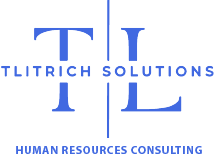When an employee leaves a company, it’s crucial to have a comprehensive offboarding process to ensure a smooth transition for both the departing employee and the organization. A well-structured offboarding process can help protect your company, maintain productivity, and leave a positive impression on the departing employee, potentially making them an advocate for your company. Here’s a detailed checklist to guide HR professionals through the offboarding process:
1. Notification and Documentation
Confirm Resignation or Termination
- Receive formal notice: Ensure the employee submits a formal resignation letter or receive official termination documentation.
- Acknowledge receipt: Send a written acknowledgment of the resignation or termination notice.
Update Internal Systems
- Notify relevant departments: Inform IT, payroll, security, and other relevant departments of the employee’s departure.
- Update records: Adjust the employee’s status in the HR system and update organizational charts as needed.
2. Knowledge Transfer
Schedule Exit Interviews
- Conduct an exit interview: Gain insights into the employee’s experience and reasons for leaving, which can be valuable for improving retention strategies.
Facilitate Knowledge Transfer
- Document processes: Ensure the departing employee documents their key responsibilities, processes, and ongoing projects.
- Identify a successor: Designate a team member to take over responsibilities and arrange for training and knowledge transfer sessions.
3. Return of Company Property
Collect Company Assets
- Retrieve devices and equipment: Ensure all company laptops, mobile phones, tablets, and other electronic devices are returned.
- Collect access cards and keys: Retrieve all office keys, access cards, ID badges, and parking passes.
- Return other property: Ensure any additional company property, such as uniforms, credit cards, or tools, is returned.
Conduct Asset Inspection
- Inspect returned items: Check the condition of returned items and document any damages or missing items.
4. Access Termination
Disable System Access
- Revoke digital access: Terminate access to email accounts, company networks, software applications, and other digital platforms.
- Change passwords: Update passwords for any shared accounts the employee had access to.
Retrieve Confidential Information
- Secure data: Ensure all company data on personal devices is returned and deleted.
- Transfer files: Transfer important files and emails to the appropriate successor or manager.
5. Financial and Legal Considerations
Finalize Compensation
- Process final paycheck: Ensure the departing employee receives their final paycheck, including any unpaid wages, overtime, and accrued but unused vacation days.
- Handle deductions: Account for any deductions for unreturned property or other expenses.
Address Benefits and Legal Requirements
- Discuss benefits: Inform the employee about the status of their benefits, including health insurance, retirement plans, and any continuation options (e.g., COBRA in the U.S.).
- Provide required notices: Issue any legally required documentation, such as the Certificate of Group Health Plan Coverage.
6. Communication and Transition
Announce the Departure
- Notify the team: Communicate the departure to the employee’s team and relevant stakeholders, maintaining confidentiality and professionalism.
- Update clients: If applicable, inform clients or external partners about the employee’s departure and introduce their replacement or point of contact.
Conduct a Farewell
- Arrange a farewell event: Organize a farewell meeting or gathering to show appreciation for the employee’s contributions.
- Provide a reference: Offer to provide a reference or letter of recommendation, if appropriate.
7. Feedback and Continuous Improvement
Review the Offboarding Process
- Gather feedback: Collect feedback from the departing employee about the offboarding process.
- Identify improvements: Analyze the feedback and identify areas for improving the offboarding process.
Document Lessons Learned
- Update policies: Revise offboarding policies and checklists based on lessons learned and feedback received.
Conclusion
A thorough offboarding process is essential for maintaining organizational stability and ensuring a positive experience for departing employees. By following this checklist, HR professionals can manage employee exits smoothly, safeguard company interests, and foster a respectful and appreciative work environment.
Remember, the way you handle offboarding can impact your company’s reputation and future talent acquisition, so make it a priority to handle each transition with care and professionalism.
